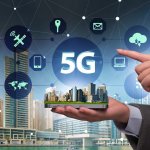Throughout history, the automotive sector has always been one of the most open to new technology. In automobiles, electric, hybrid, and solar energy systems are beginning to replace internal combustion engines and fuel-fed engines as the future’s driving power.
However, the development of autonomous technology and the continued usage of computers have begun to improve user interaction while reducing the necessity for direct control of “driving.” Several studies looked at a number of factors impacting the automobile ecosystem. It includes more linked vehicles and the arrival of tech giants such as Google and Apple, driverless vehicles, the development of the sharing economy, and a growing interest in sustainability.
As the user begins to hand over control to an inbuilt navigation system, the advancement of autonomous technology will alter the driving experience. One thing is certain: future automobiles will be automated and interactive, and the two trends are inextricably linked.
Advancement in autonomous technology
The most significant technological breakthrough that has already arrived in the automobile industry is autonomy. Self-driving cars are being developed on a broader scale by manufacturers.
Autonomous emergency braking (AEB) is a function found in most contemporary automotive mold. AEB systems use radar, cameras, and lidar technologies to analyze the road ahead and calculate the likelihood of a collision. In general, these systems alert the driver that action is required to avert a potential accident, and if no action is done, AEB will brake on the driver’s behalf.
Road-user interpretive software, which has been built on understanding the usual road behaviour of other drivers, is another autonomous technology that was recently included in the Google Car. Shape and motion descriptors let the car’s central processing unit make smart judgments in response to other road users’ actions.
The technology is advanced enough to determine if nearby road users are automobiles, bicycles, or motorcycles based on their speed and movement patterns. In addition, autonomous technology has developed a knowledge of the movement of cars around them with the help of laser sensors.
Self-driving techniques
A system with a built-in stop and go feature is adaptive cruise control. It needs the cooperation of 30 control units to assess the vehicle’s adjacent surroundings. The cruise control adjusts the speed based on the distance between the driver’s vehicle and the vehicle ahead, ranging from 0 to 155 mph.
The technology judges distance using two radar detectors at the front of the car, and users may adjust the pace at which the car accelerates. However, in terms of deceleration, the system is pretty restricted. These cruise control systems can proactively assist drivers, but they are not autonomous.
In the present market, some automobiles have the capacity to park themselves without the owner’s participation. Similarly, Google began testing self-driving vehicles with remote sensing techniques in 2015, with a laser installed on the roof to build a 3D map of the surrounding environment to navigate automatically.
The increasing importance of cruise control and self-parking features in several vehicles suggests that completely autonomous systems will be the inevitable next step in the auto-tech revolution.
Increased user activity
The ability for user involvement has greatly expanded as computers have become increasingly essential to the mass manufacture of vehicles. Every automobile manufactured nowadays includes an inbuilt computer that handles a variety of tasks.
The user can manage GPS, cruise control, car temperature, and even exhaust emissions with several onboard computers. The amount of user engagement accessible to drivers throughout the world has risen because of these onboard technologies.
Drivers may now use their onboard GPS to choose a location and conduct onboard diagnostics to discover any faults with the vehicle’s subsystems. The way new cars are built and utilized is characterized by user involvement. With the smartphone revolution, the vehicle industry launched smart dashboards, onboard tablets allowing customers to read their phone messages while listening to music over the radio through one interface.
Reduced pollution and running cost
Automobile owners may save one-third on transportation costs by using electric vehicles instead of conventional gasoline. Hybrid automobiles and cars that operate on alternative fuels are examples of technological advancements in the automobile industry. Due to rising gasoline prices, electric automobiles are getting a lot of traction all around the world. According to research, the number of electric car charging platforms will significantly grow in the summer of 2020.
With human-caused climate change having negative consequences for the environment, every sector is shifting to more environmentally friendly technologies. The combustion of fossil fuels contributes significantly to environmental degradation, and governments all over the world are enacting stringent emission standards. Emissions may be reduced considerably by changing your lifestyle and how you can use your cars.
Other smart technologies
Users may experience the functionality of a phone without having to pick it up due to technologies like CarPlay and Google Android Auto. In reality, this implies that users will spend less time staring at their phones since they will engage with a more robust user interface.
Yet, communicating with an onboard computer is a diversion from the road ahead. So manufacturers include technologies like Gesture recognition, a product design that allows users to operate their radios with hand gestures. It is a part of their emphasis on user engagement.
A tiny sensor in the roof control panel monitors the surroundings in front of the display to detect your movements. For example, you may adjust the volume with a circular pattern and answer or cancel phone calls by sliding to the left or right with the Gesture control. Users can also build their unique settings if they require them.
Conclusion
If the rise in user interaction and autonomous functions has disclosed anything, the auto industry is still dedicated to the self-driving vehicle goal. However, as self-driving cars become more common, consumers will demand more significant user interaction when travelling.
The less time users spend on ‘driving,’ the more time they want to connect with onboard technologies. As a result, creating and enhancing self-driving automobile technology is the way of the future. However, it is a different tale whether it will succeed or not.




